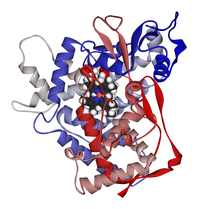
Comparison of the Estimation Methods from Acute to Chronic Biotic Ligand Model‐Based Predicted No‐Effect Concentrations for Nickel in Freshwater Species
Sign Up to like & getrecommendations! Published in 2023 at "Environmental Toxicology and Chemistry"
DOI: 10.1002/etc.5572
Abstract: Biotic ligand models (BLMs) and the sensitivities of indigenous species are used to assess the environmental risk considering the bioavailability of metals, such as nickel. However, the BLM‐based acute–to–chronic ratio (ACR) is required if the… read more here.
Keywords: blm based; biotic ligand; predicted effect; acute chronic ... See more keywords

Complexation reduces nickel toxicity to purple sea urchin embryos (Strongylocentrotus purpuratus), a test of biotic ligand principles in seawater.
Sign Up to like & getrecommendations! Published in 2021 at "Ecotoxicology and environmental safety"
DOI: 10.1016/j.ecoenv.2021.112156
Abstract: The potential for Ni toxicity in seawater is of concern because of mining and processing activities in coastal regions. Determining Ni speciation is vital to understanding and predicting Ni toxicity and for bioavailability-based nickel risk… read more here.
Keywords: biotic ligand; seawater; complexation; toxicity ... See more keywords

Making the Biotic Ligand Model kinetic, easier to develop, and more flexible for deriving water quality criteria.
Sign Up to like & getrecommendations! Published in 2020 at "Water research"
DOI: 10.1016/j.watres.2020.116548
Abstract: In aquatic environments, the ecological risks posed by metals are greatly affected by water chemistry, thereby creating challenges for water quality management. Biotic ligand models (BLMs) have become the most widely used tools to interpret… read more here.
Keywords: biotic ligand; water; chemistry; model ... See more keywords

Interspecies-Extrapolated Biotic Ligand Model to Predict Arsenate Toxicity to Terrestrial Plants with Consideration of Cell Membrane Surface Electrical Potential
Sign Up to like & getrecommendations! Published in 2022 at "Toxics"
DOI: 10.3390/toxics10020078
Abstract: Arsenic is a metalloid that is highly toxic to living organisms in the environment. In this study, toxicity caused by inorganic arsenate (As(V)) to terrestrial plants, such as barley Hordeum vulgare and wheat Triticum aestivum,… read more here.
Keywords: membrane; biotic ligand; toxicity; terrestrial plants ... See more keywords